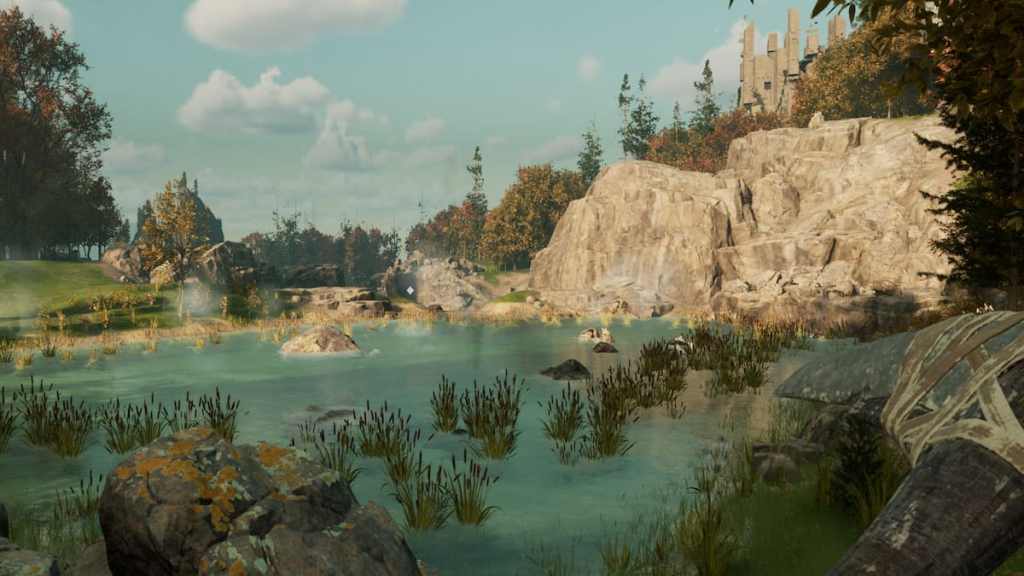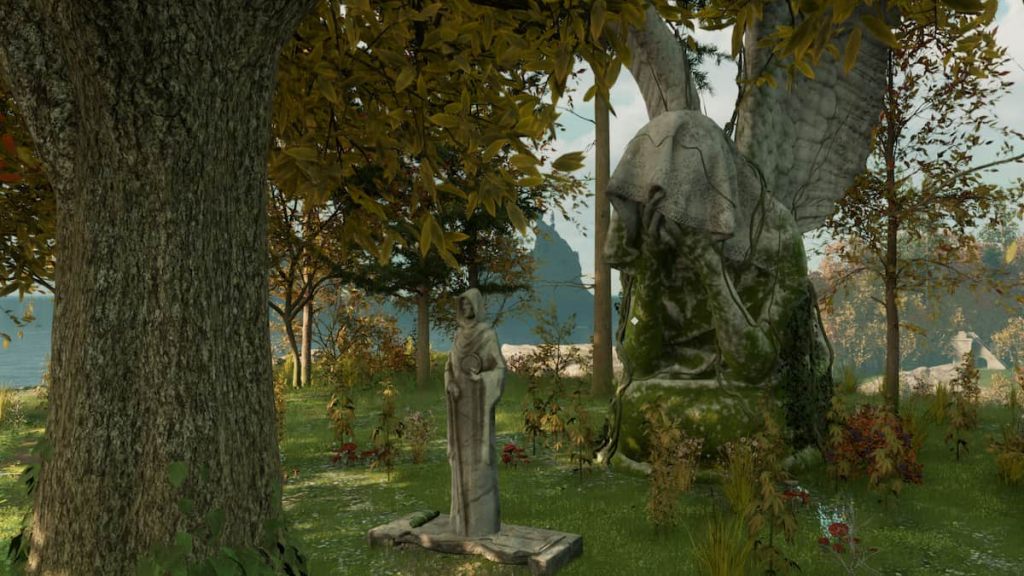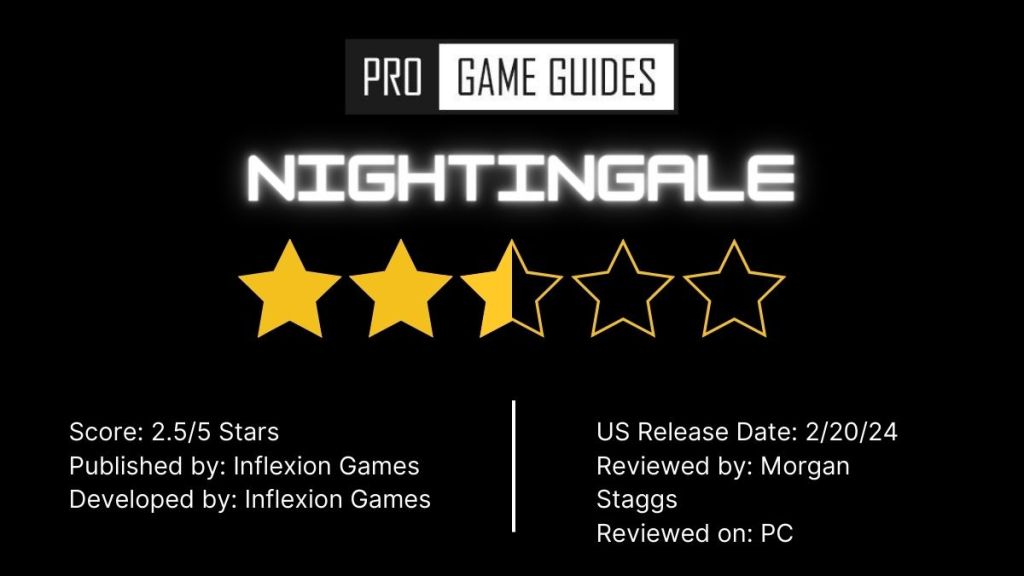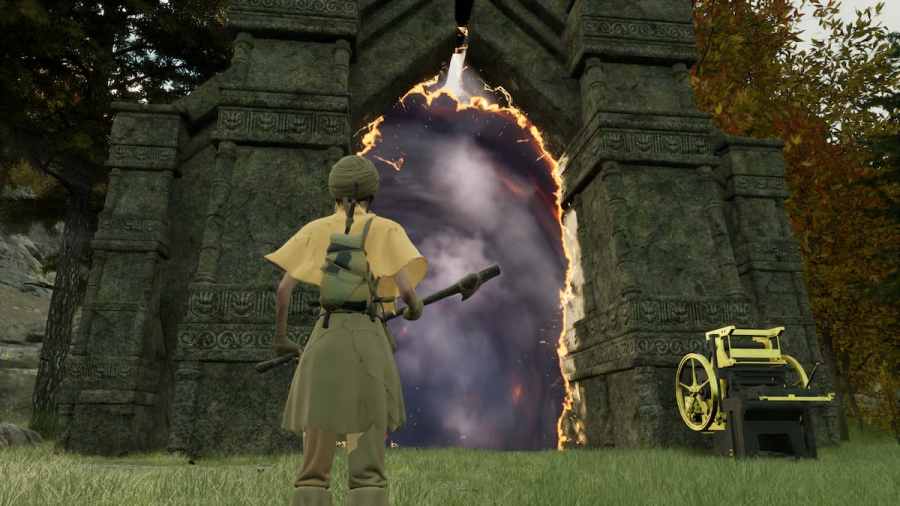In the wake of survival games like Lego Fortnite and Palworld, Nightingale stands out as a fantasy-driven adventure that pits a grounded Victorian aesthetic against fae realms and magical creatures. Despite earnest attempts at innovation, however, Nightingale's dull gameplay and poor technical functionality left me wondering what could have been.
Exploration

The main draw of Nightingale is its portals, which allow you to discover new realms and biomes. The card system used to mold these realms is a high point, allowing you to buff yourself or your gear, control the environment, and even spawn stronger enemies. Realms contain new creatures, structures, and characters, incentivizing you to try all kinds of card combinations.
For all of Nightingale's mystique and wonder, however, exploration itself is a chore that I quickly grew bored of. You'll see dozens of the same procedurally generated structures, which makes exploring them feel unrewarding. Most are small and simple to navigate, providing paltry loot that mostly just takes up inventory space. Climbing picks can help you scale sheer surfaces, but the early-game versions of this tool are practically useless. Good luck trying to swim to an interesting-looking island; the player character can and will drown in just inches of water.
There are some unique structures in Nightingale, promising greater loot if you can solve puzzles. However, every puzzle I've encountered has been bafflingly simple, including basic obstacle courses and interacting with buttons in a specific sequence. The absence of a real challenge makes any reward feel unearned, souring what should be a central experience in-game.
Score: 2/5 Stars
Atmosphere

One area in which Nightingale succeeds is its atmosphere. The game is undeniably gorgeous; its sprawling forests and towering cliffs have an otherworldly beauty that makes me feel truly immersed in the environment. Nightingale's sound design is similarly excellent, as between the blissful sounds of nature, you'll occasionally hear a chilling roar from some supernatural creature in the distance, a stern reminder that this world is hostile to you. Machines sound just as vivid and alive as their animal counterparts, and even basic effects like rocks breaking are pleasant to the ear.
Despite my grievances with Nightingale's procedurally generated structures, the game uses a variety of architectural styles and aesthetics that highlight the conflict between humans and fae. Village ruins stand side-by-side with both ancient temples and industrial buildings. These visual clashes aren't jarring whatsoever; rather, they create a mysticism that feels truly unique to Nightingale.
Score: 4/5 Stars
Combat

Nightingale throws a huge number of enemies at you, ranging from aggressive boars to zombie-like creatures called Bound. However, combat in Nightingale is somewhat clunky due to those enemies' lackluster AI. The hostiles you'll encounter are far too easy to defeat, including bosses. Most can be duped by simply running in a circle and whittling their health down with a ranged weapon. Despite Nightingale's excellent creature design, enemies quickly stop feeling like a threat once you realize how terrible their pathing is.
Headshots feel satisfying to land, particularly with melee weapons, and I enjoyed finding the correct timing for my attacks. Spells can be attached to your gear and cast during battle, adding some variety to an otherwise dull cycle of running, blocking, and shooting. Despite these positives, I found myself rushing through combat encounters without ever feeling truly afraid to die. Most enemies will simply run at you until they die; high-level enemies have predictable attack patterns that mitigate any suspense while fighting them. A flashy pistol and some simple spells are not enough to prevent combat from feeling utterly repetitive.
Score: 2/5 Stars
Online Functionality

Nightingale is online-only, and even single-player worlds are subject to the whims of server connectivity. While this makes multiplayer gameplay simple and intuitive, I feel that the drawbacks of this feature are too great to consider it a positive.
Server maintenance shuts Nightingale down for extended periods, during which no one can access the game. Lag is a common obstacle to gameplay, causing some delay while using consumables and collecting dropped items. Loading screens last an eternity, especially while starting the game itself, to the extent that I often tab out of Nightingale until I hear sound playing.
Where Palworld allows you to toggle multiplayer at the push of a button, Nightingale forces you to maintain a consistent internet connection. For players outside of North America, this means severe lag spikes and unstable gameplay, especially while attempting multiplayer. The server-based experience is essential to Nightingale, yet it fails to make that experience accessible to everyone.
An offline mode is coming, but as it stands, the technical state of the game leaves a lot to be desired.
Score: 1/5 Stars
Verdict - Great concept, poor execution
It's important to keep in mind that an early access game is, by definition, unfinished. However, Nightingale can only be judged by its current state, which is ultimately very poor. Almost all of Nightingale's features have been better executed by at least one of its peers in the survival game genre; Lego Fortnite has more intelligent NPCs, Palworld has a much sleeker UI, and Valheim more deftly balances the demands of singleplayer and multiplayer functionality. As such, there's little reason to play Nightingale instead of these other titles right now.

Disclaimer: A free copy of the game was provided to PGG by the publisher for review purposes.
